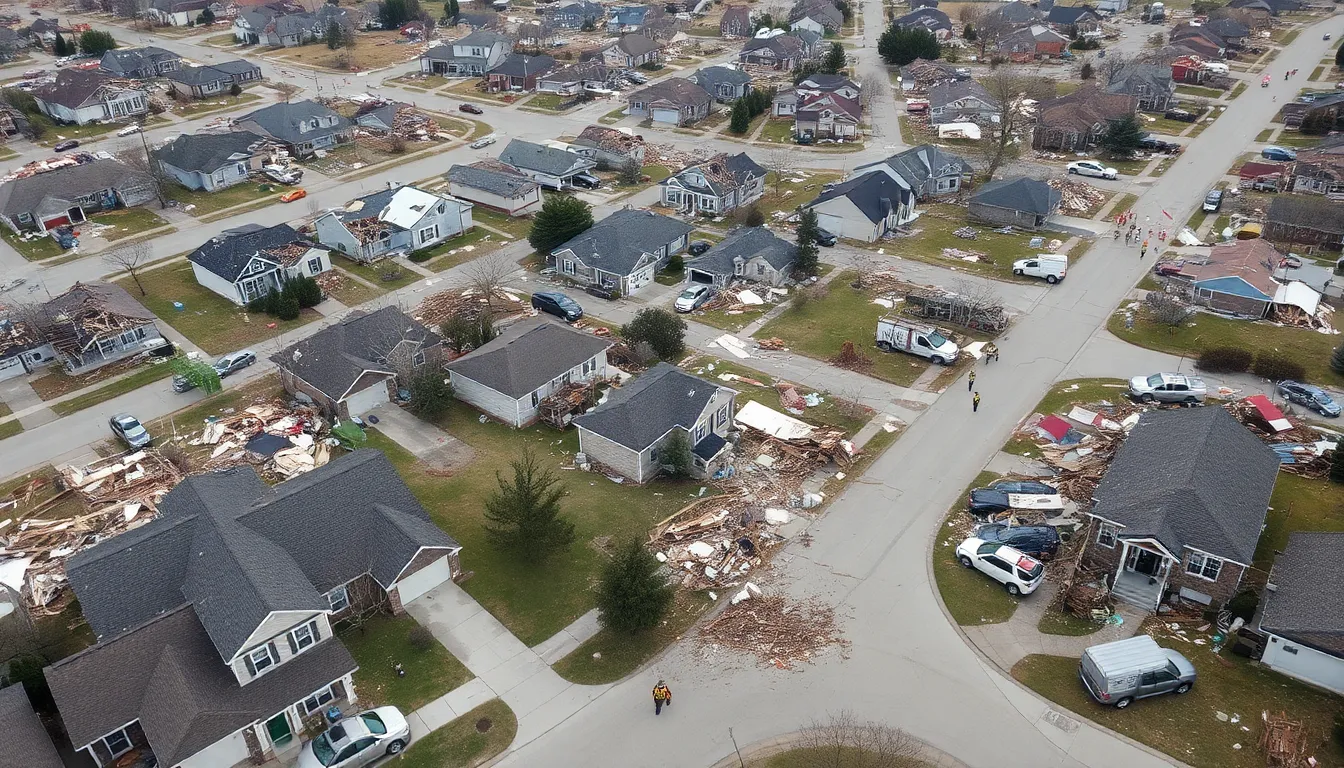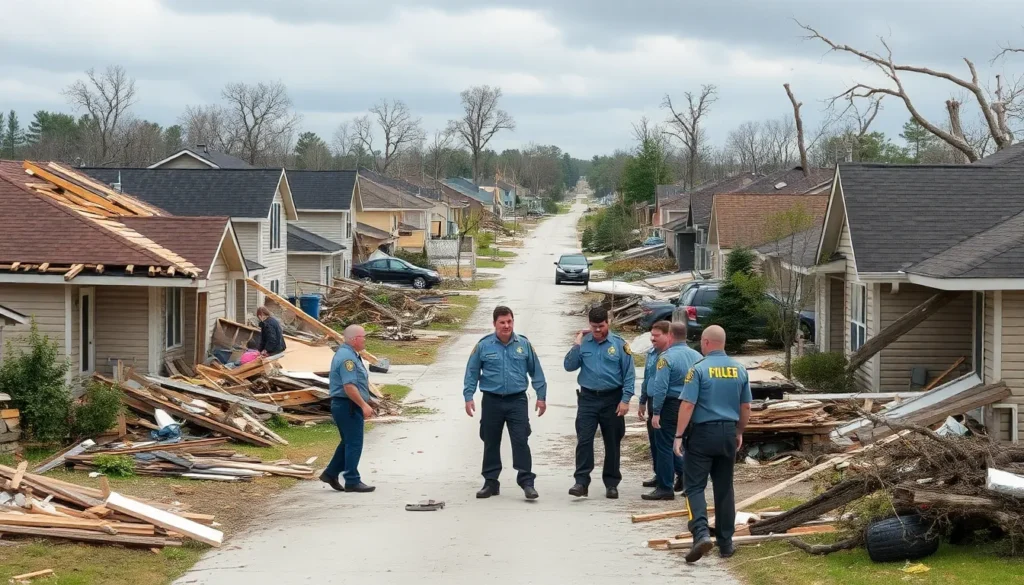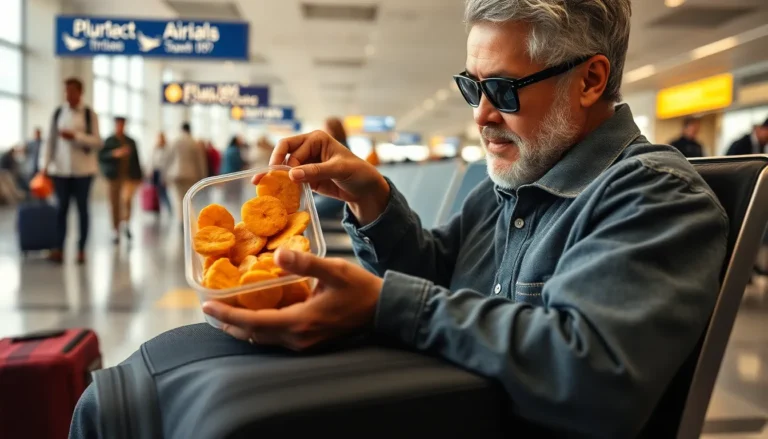Table of Contents
ToggleLast night, Missouri found itself in a whirlwind of chaos as a tornado touched down, leaving a trail of destruction that could make even Mother Nature shake her head in disbelief. Homes were upended, trees became modern art installations, and residents were left picking up the pieces while wondering if they accidentally signed up for a real-life disaster movie.
Overview of Tornado Damage in Missouri Last Night
Tornadoes struck Missouri recently, leading to widespread devastation. Reports indicate that several homes suffered severe damage, with roofs torn off and walls collapsed. Local emergency services responded quickly to assess the impact and assist affected residents.
Uprooted trees littered streets, complicating rescue efforts. Power outages impacted thousands, leaving families without electricity in the middle of the storm’s aftermath. Various areas experienced significant interruptions in communication and transportation, further challenging recovery efforts.
Damage estimates suggest that the financial toll could reach millions of dollars. Communities such as Joplin and Springfield faced the brunt of destruction, with emergency shelters set up for displaced individuals. Additionally, multiple businesses reported property loss, hindering local economies.
Rescue teams continue to search for individuals who may still be trapped or in need of assistance. State officials have coordinated with federal agencies for additional resources and support. Cleanup efforts are underway, though the full scope of damage will take time to assess accurately.
Emergency funds are being allocated to facilitate immediate repairs. Volunteers from surrounding regions are mobilizing to aid in recovery. Neighbors are banding together, demonstrating resilience during this challenging time.
Areas Affected

The tornado caused widespread destruction across several communities in Missouri. Local reports highlight significant damage in both urban and rural areas.
Towns and Cities
Joplin experienced extensive damage with entire neighborhoods impacted. Homes lost roofs, and several buildings collapsed from the storm’s force. Springfield, another heavily affected city, saw streets covered in debris from downed trees and power lines. Emergency services established temporary shelters to assist displaced residents, ensuring they receive immediate support. Electrical outages affected thousands within these cities, complicating recovery efforts as local officials coordinated damage assessments.
Rural Regions
Rural areas around the tornado’s path suffered from severe wind damage, including uprooted trees and destroyed farm structures. Reported incidents included damaged agricultural equipment, leading to potential losses for farmers. Nearby towns, like Carthage and Neosho, also reported significant impacts with homes uninhabitable and infrastructure compromised. Emergency responders faced challenges due to damaged roads, making access to affected locations difficult. Restoration efforts are underway, as local communities band together to support their neighbors during this crisis.
Nature of the Damage
The tornado that struck Missouri caused widespread and severe damage across multiple communities. Various reports illustrate the extent of destruction.
Residential Damage
Residential areas faced the brunt of the tornado’s fury. Numerous homes sustained catastrophic damage, with roofs blown off and walls collapsed. Entire neighborhoods in Joplin appeared unrecognizable, while Springfield residents dealt with debris scattered throughout streets. Families found their homes rendered uninhabitable, pushing many into emergency shelters. Local authorities noted that some structures appeared structurally compromised beyond repair, amplifying community distress. Recovery operations are focused on providing immediate assistance to displaced individuals, ensuring they receive necessary care during this trying time.
Infrastructure Damage
Infrastructure also suffered significant impacts. Utilities, including power lines, became downed, resulting in widespread outages affecting thousands. Streets in affected areas became impassable due to debris, complicating rescue and recovery efforts. Roads in rural locations exhibited extensive wind damage, disrupting transportation. Emergency services faced challenges responding quickly due to damaged infrastructure. Compromised facilities like schools and community centers further hindered the recovery process. Coordinators are working closely with state and federal agencies to address these infrastructure challenges.
Emergency Response
Emergency response efforts commenced immediately following the tornado’s destruction in Missouri. Local authorities prioritized the safety of residents while combing through wreckage for potential survivors.
Local Authorities’ Actions
Local authorities enacted community emergency plans rapidly. Emergency services conducted welfare checks and coordinated search efforts across affected neighborhoods. First responders assessed structural damages to homes and public properties. Debris clearance crews cleared roads to facilitate access for emergency responders. Authorities opened emergency shelters in Joplin and Springfield, providing safe havens for displaced residents. Community leaders held briefings to relay critical updates and mobilize resources effectively.
Community Support Efforts
Community support efforts played a vital role during this crisis. Volunteers flocked to local shelters, offering food, clothing, and emotional support to those affected. Local businesses organized donation drives for essential supplies. Neighbors banded together, creating informal networks to assist each other in cleanup and recovery processes. Fundraising events began to emerge, aiming to raise money for long-term recovery initiatives. Collaboration among local organizations and residents showcased resilience amid devastating circumstances.
Recovery and Rebuilding Efforts
Recovery efforts commenced swiftly in the aftermath of the tornado, as local authorities focused on restoring safety and stability. Emergency services conducted thorough searches through wreckage, ensuring no survivors remained unaccounted for. Welfare checks served as a priority for responders, providing critical information to help families reunite.
Shelters in Joplin and Springfield received immediate attention, accommodating those displaced by the destruction. Community support initiatives emerged rapidly, with volunteers distributing food, clothing, and emotional assistance to those affected. Local businesses played an essential role by organizing donation drives, ensuring resources reached those in need.
Cleanup crews cleared debris from roads, expediting access for emergency services and allowing for transportation to resume. Restoration of power became vital, especially as downed power lines left thousands in the dark. Towns worked tirelessly to remove hazardous materials and rebuild essential infrastructure.
Neighbors collaborated closely to support one another, showcasing resilience in adversity. Fundraising events took shape, aimed at financing long-term recovery projects. Partnerships among local organizations enhanced the effectiveness of recovery strategies, fostering a united community response.
In Springfield, community leaders began outlining rebuilding plans to address the extensive damage. Structural assessments ensured the safety of compromised buildings, with many residents anxiously awaiting evaluations. Rebuilding efforts prioritize essential services, streamlining the return to normalcy.
The recent tornado in Missouri has left a profound impact on numerous communities. As residents begin to navigate the aftermath, the importance of community support and resilience shines through. Emergency services are working tirelessly to restore safety and stability while local organizations and volunteers step up to assist those in need.
While the recovery process will take time and effort, the spirit of collaboration among neighbors and local leaders offers hope. The road ahead may be challenging, but together, these communities can rebuild and emerge stronger from this devastating event.







